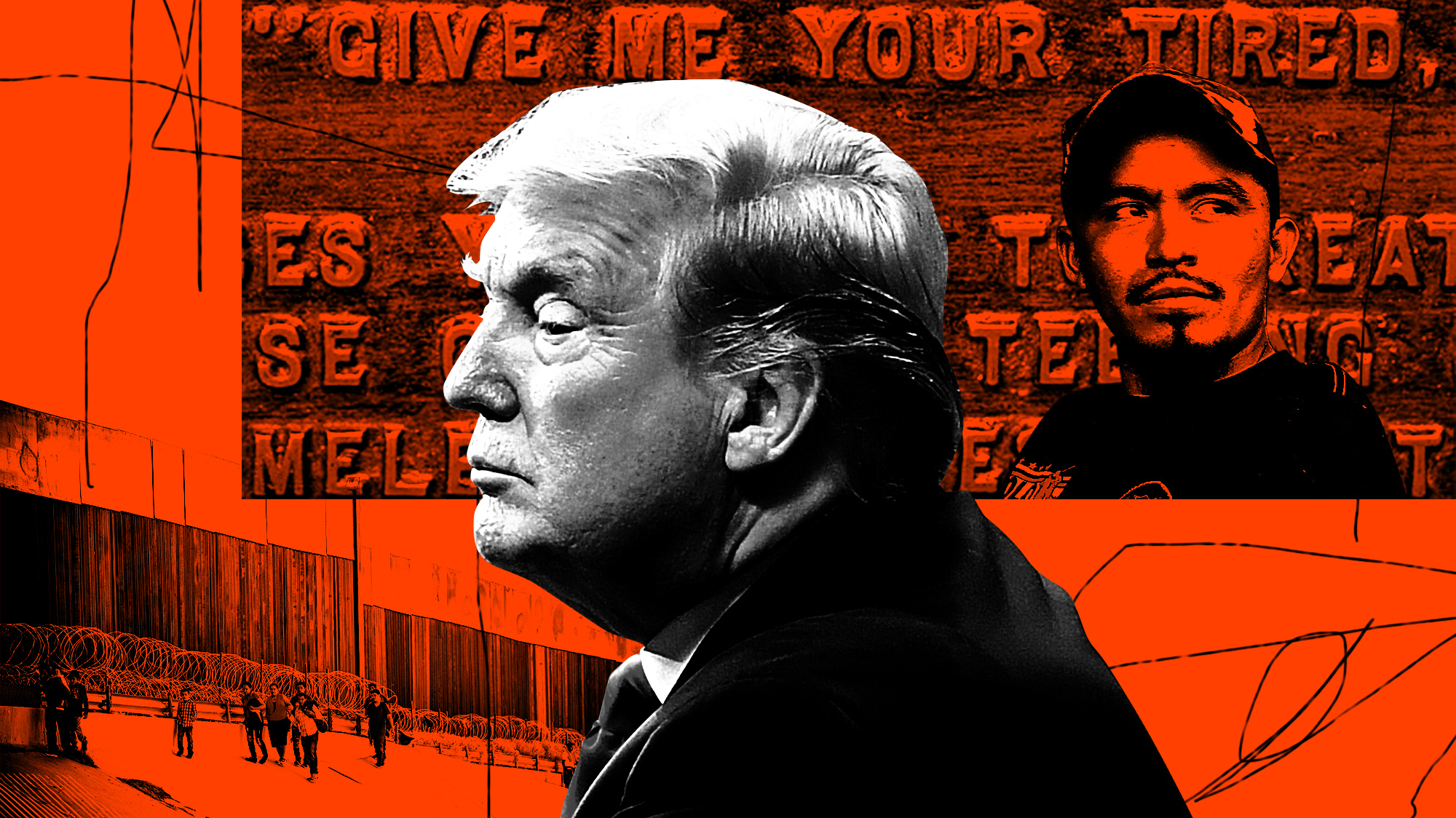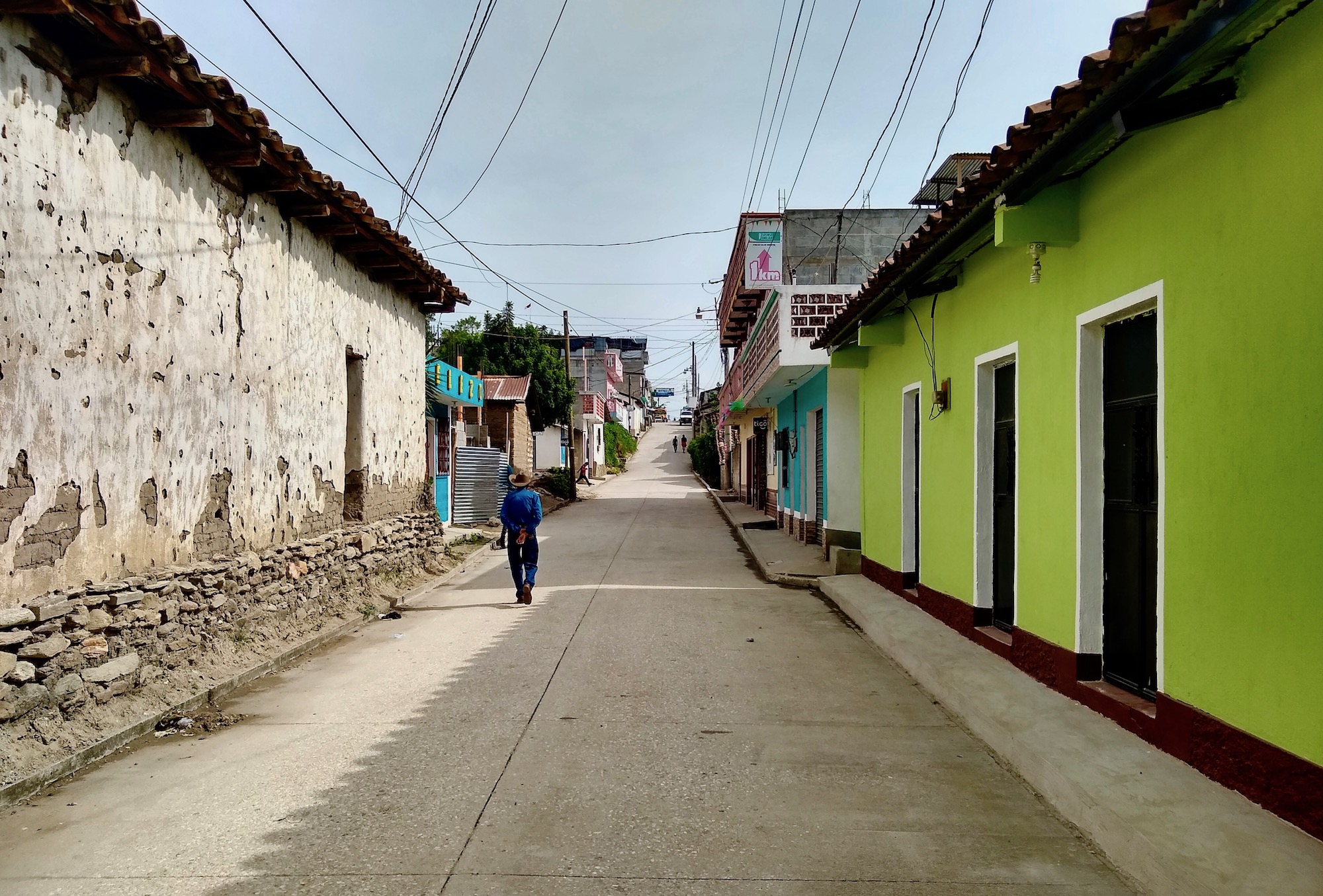César López remembers the exodus that began last October. His older brother and 11-year-old niece were the first to leave for Tennessee. Two younger brothers followed, along with all three brothers’ wives and five more children. The dozen of them shared one roof in Nashville, which had suddenly become the top destination for López’s neighbors. Hardly anyone used to leave Chivaquito, a 700-person mountain village in central Guatemala that lacked electricity until 2016. This year, he estimates, 40 villagers left for the United States.
López considered going, too. The journey would have been expensive—$5,000 for a smuggler, plus 10 percent monthly interest, in a region where a day’s labor might pay $5—and dangerous. But López had few options in Chivaquito, where there was no steady work and a lack of rain was killing subsistence crops. He was better off than most, earning a modest income building furniture and selling it to neighbors. But to expand his business, he needed power tools that he couldn’t afford without earning a salary in dollars.
The problem for López was that something had changed by the time we met in August. Everyone in Chivaquito was now saying the US border was closed.
A record-breaking wave of migration from Central America to the US border began in the summer of 2018, after word spread that migrants no longer needed to evade Border Patrol agents: If they arrived with a child, they could turn themselves in and be quickly released, following a 2015 court ruling limiting detention of migrant children. Central American families started arriving at the border in unprecedented numbers. Border Patrol agents took 84,486 parents and children traveling together into custody in May, compared with 925 in the same month of 2012.
As border crossings climbed this spring, President Donald Trump berated his staff, extorted Mexico with tariff threats, and reportedly offered pardons to border officials if they broke the law to keep migrants out. At the US-Mexico border, a new policy, misleadingly called the Migrant Protection Protocols, prevented tens of thousands of migrants from entering the United States. Under the policy, rolled out in January and ramped up this summer, asylum seekers are made to wait in Mexico rather than the United States for the chance to make their case before a judge. The shift, coupled with a crackdown by Mexico that deported tens of thousands of Guatemalans, Hondurans, and Salvadorans long before they reached the United States, has reverberated all the way down through Central America. Family migration fell by 85 percent between May and November.
Two thousand miles south of the border, the changes have upended life in Chivaquito and the surrounding municipality of Cubulco. For more than a century, the US government had propped up plutocratic regimes whose brutality and corruption drove Guatemalans from their hometowns, in search of jobs and safety in the United States, which then systematically denied them the chance to legally work there. The US federal court ruling had given them another way in, and mountain hamlets like Chivaquito began to be transformed by a new outflow of people and influx of dollars. And then, with a new administration in Washington eager to go to extreme lengths to keep out nearly all Central Americans, residents of these villages found themselves stranded.
Border agents encountered just 2,368 Guatemalan family members in November, down from 34,303 in May. In Washington, the Trump administration celebrated the drop as a victory. From Chivaquito, it looked much more like a tragedy.
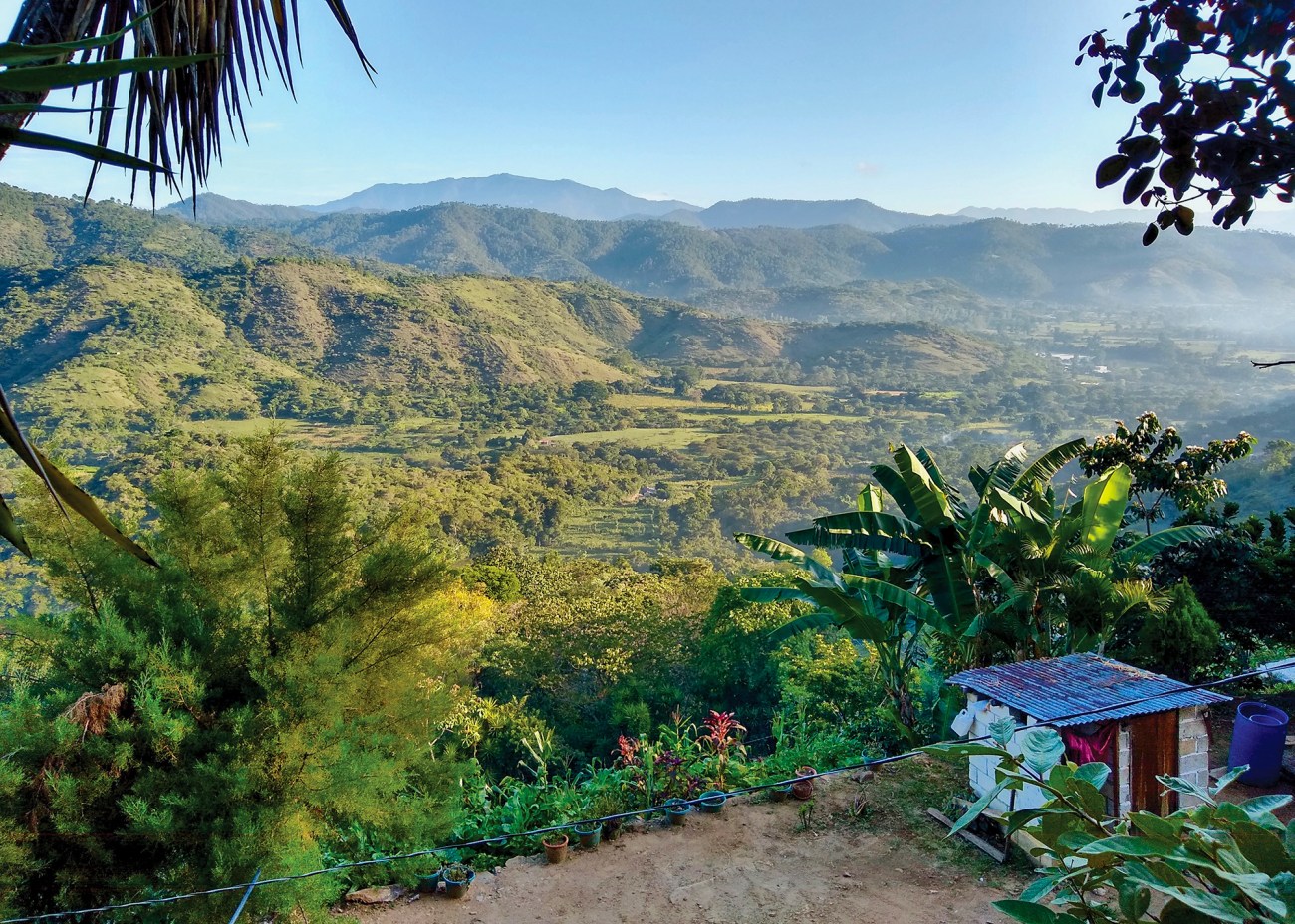
A property just outside the downtown of Cubulco, Guatemala.
For a city that’s become defined by migration, Cubulco is hard to reach—or to leave. Though it’s less than 40 miles from Guatemala City, the bus trip from the city typically takes five hours, even if the drivers accelerate into vertiginous hairpin turns in the mountains. Signs of Cubulco’s diaspora are everywhere. Clothing boutiques advertise new shipments of American clothes. A restaurant downtown, rather than calling itself Fonda Deliciosa (“Delicious Diner”), goes by Fonda Delish. The city of 75,000 is located in Baja Verapaz, Guatemala’s third-smallest and most migration-dependent state. Remittances make up a third of the state’s economy, the largest share in Guatemala by a wide margin.
Cubulenses, as people from Cubulco are known, have been migrating for generations, but until recently, most went to coffee and sugar plantations in Guatemala and Honduras. Poorer residents still head to the plantations, where they can make $150 a month picking coffee or roughly twice that in the notoriously brutal sugar fields. In the late 1980s, the first Cubulenses started heading to the United States as migration surged in the wake of a 1986 law that provided legal status to Guatemalans.
At the time, there were still no phones in Cubulco. News of migrants’ arrival reached relatives back home in Morse code telegrams, recalls Belia Dubón, a businesswoman from a prominent family in town. In 1990, her brother Beto became one of the first people to leave. He easily crossed the border by waiting for the receding headlights of a Border Patrol vehicle to signal a shift change. There was no Western Union in Cubulco, so Beto sent remittances through the mail. He asked God to bless each envelope and found out a month later whether his prayers were answered.
After marrying a Puerto Rican, Beto, a barrel-chested man with a gloriously full mustache, is now a US citizen living in South Jersey. He owns 10 homes, runs a landscaping business, and plans to retire at 50. His Facebook news page, Noti Cubulco, has 177,000 followers—more than any newspaper in New Jersey. It is stories like his that capture Cubulenses’ imaginations.
When we met at a Dunkin’ Donuts in Deptford, New Jersey, Beto described growing up poor, but his wife made sure to point out that he’d been better off than many people in Cubulco. The poorest of the poor couldn’t—and still can’t—afford to migrate. But far more families have found ways to reach the United States in recent years. From 2012 to 2014, no families from Cubulco were apprehended at the border, according to government data obtained by University of Texas researcher Stephanie Leutert. In 2015, 34 parents and children traveling together from Cubulco were taken into custody. In 2016, the year after a federal judge blocked the Department of Homeland Security from detaining families indefinitely, the total rose to 242.
In Trump’s first year in office, border crossings fell to a nearly five-decade low. But a year later, migration from Cubulco and throughout Central America surpassed previous records as word spread that families were being released and given court dates years into the future because of massive backlogs in immigration courts. So in November 2018, a Cubulco woman I’ll call Aracely, tired of scraping together $65 a month cleaning houses, set out with her 7-year-old son, her sister, and her niece. Like most people from the Cubulco region, Aracely is Achi, an indigenous Mayan group. She’d learned Spanish as a second language.
Her story is typical of the ones I heard in Cubulco. She said robberies were a problem in her neighborhood, but safety wasn’t why she left. The problem in Cubulco is that there are nowhere near enough jobs. Among the 40 Guatemalan towns with the highest migration rates this year, 37 had murder rates below the national average, while three had below-average poverty rates. (They weren’t, however, the very poorest parts of the country, where smuggling fees put migration to the United States out of reach.) In the sanitized language of immigration debates, many Guatemalans are “economic migrants,” who don’t qualify for asylum since they aren’t fleeing persecution.
After 15 harrowing and hungry days in the custody of smugglers, Aracely and her family reached the border, only to be placed in the US immigration facilities notorious among migrants: the holding pens that migrants call dog kennels and the freezing rooms known as iceboxes. The whole experience was frightening enough that she advised others not to attempt it.
The month after Aracely arrived at the border, María Herlinda Ruiz, a 23-year-old from Cubulco, was killed in southern Mexico on her way to the United States by masked assailants who were reportedly driving a police vehicle. Ruiz had first tried to find work on Guatemala’s southern coast before heading north with her 3-year-old son, who survived the attack. In May, Carlos Gregorio Hernández, a 16-year-old from a village 10 miles south of downtown Cubulco, died in Border Patrol custody after contracting the flu. Border Patrol kept Hernández in a concrete cell without proper medical attention, surveillance footage obtained by ProPublica showed, and provided a false account of his death.
Since then, migration has become even more perilous. With migrants no longer able to turn themselves in to border agents, they’ve had to attempt dangerous desert and river crossings to avoid detection. While I was in Cubulco, Vilma Xiomara Mendoza, a 20-year-old from a neighboring village who had been sent back to Mexico under the Migrant Protection Protocols, drowned in the Rio Grande while trying to return to the United States. A month later, Noti Cubulco reported that Luis Primero, a barber downtown, had died while trying to cross through the desert.
Aracely and her sister were the fourth and fifth of nine siblings to come to the United States. Another sister followed in March. The sisters settled near New Orleans, an area Aracely found confining and overly dependent on cars. Cubulco was beautiful, she reminisced, and you could walk wherever you wanted. But things in Louisiana were going well. By September, she no longer needed to wear an Immigration and Customs Enforcement ankle monitor, and her husband, whom she joined in Louisiana, had already earned enough to pay off the $5,200 smuggling fee.
What did she like best about life in the United States? “There’s food,” Aracely said. In Cubulco, “you eat if you have work and if you don’t find work, you don’t. I thank God that I eat what I want in this country.” She didn’t plan to apply for asylum and expected to leave as soon she received a deportation order. She hoped, somewhat optimistically, that it would be four to six years before that happened.
In another world, Aracely might have flown to Louisiana on a work visa without needing to pay smugglers and risk her life. But the United States makes it impossible for nearly all poor Guatemalans to enter the country legally. In 2018, the US government let in 7,337 Guatemalans on temporary work visas, compared with 247,581 Mexicans. Instead of making more visas available to Central Americans, the country builds physical and legal walls. Any shift in those barriers can upend faraway cities and villages, in ways that are hidden from the US public and policymakers but readily apparent on the ground.
From downtown Cubulco, where new two-story homes built with remittances can cost more than $125,000, it’s not easy to grasp why Cubulenses began leaving in record numbers. A better vantage comes from the mountains. And so at 5 a.m., I met Cornelio Ciprián in the morning darkness.
Ciprián, an almost impossibly upbeat local radio DJ, hosts a show on Stéreo Génesis, a Cubulco station that broadcasts over the internet to Cubulenses in the United States. Thirty-two years old and wiry, Ciprián trains for 55-mile runs in the mountains. I’d told him that I’d done some races, and I arrived at our meeting point hoping that I hadn’t given him the wrong idea.
Fortunately, we stuck to walking, ascending in darkness over the valley as the sun summited lush mountains that stretched out to the horizon. Ciprián pointed to shriveled corn stalks that, thanks to the shortage of rain, would produce nothing. I asked what families did when their harvests failed. “First, they suffer,” he replied. The government’s limited aid programs should be a backstop, but Ciprián said the food mostly goes to political allies.
Cubulco lies in Guatemala’s dry corridor and is particularly vulnerable to the effects of climate change. Edwin Castellanos, a climate scientist at Guatemala City’s Universidad del Valle, says farmers’ crops are failing because of changing rainfall patterns. The rainy season used to run from May to October. For the past seven years, it hasn’t started until August. Climate models had predicted that shift in rain patterns would happen around 2070, Castellanos says. It isn’t possible to say for sure that the recent shift is because of climate change, but there is little doubt that irregular weather patterns in Guatemala will become more extreme as climate change worsens.
Over the mountains to the north lay the Chixoy River, along which Ciprián’s Achi parents and grandparents had grown up. The area had been settled by Achi people escaping 19th-century reforms that eliminated communal land titles in favor of a debt peonage system that forced Mayans onto plantations. By 1950, 2 percent of the population owned 70 percent of the arable land. In response, President Jacobo Árbenz began a government program to buy and redistribute land. That threatened the dominance of United Fruit, a Boston-based banana company that was Guatemala’s largest landowner. United Fruit launched a propaganda campaign against Árbenz, and in 1954, the CIA orchestrated a coup that deposed him. The US government made sure that United Fruit got its land back.
Still, the Achi settlers along the Chixoy managed to establish stable lives, subsisting on fish from the Chixoy and crops from the fertile land on its banks. But in the 1970s, from their headquarters in Washington, DC, the World Bank and the Inter-American Development Bank gave Guatemala’s government funds to help dam the river. The project was designed to bring electricity to much of the country, but locally—where power lines wouldn’t arrive for another four decades—the dam only served to flood the valley and displace 3,500 mostly Achi residents.
When locals resisted the dam project in the nearby village of Río Negro, more than 400 were slaughtered by soldiers and civil patrollers, paramilitaries who were often pressed into service by the government. In one massacre in March 1982, patrollers and soldiers went into Río Negro and killed at least 70 women and 107 children. The Inter-American Court of Human Rights later found, “They killed the babies and the children with machetes, grabbing them by the feet or the hair and throwing them against rocks or trees until they died.”
Soon after, President Ronald Reagan said Guatemala’s dictator, General Efraín Ríos Montt, had received a “bum rap” on human rights and, citing progress on this front, lifted an arms embargo on the country. Elliott Abrams, Reagan’s assistant secretary of state for human rights, said Ríos Montt had “brought considerable progress” on human rights. Ríos Montt was convicted of genocide by a Guatemalan court in 2013 and was facing a retrial when he died last year. Abrams now serves as Trump’s special representative for Venezuela.
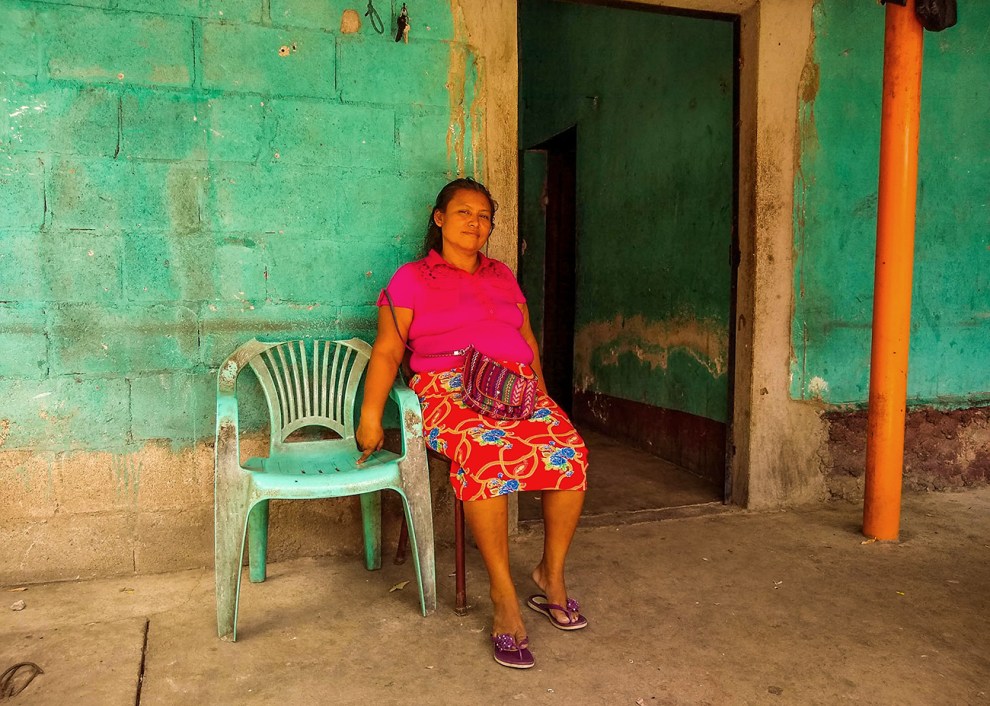
Magdalena Pérez, who was deported from the United States in 2018, sits at her home in El Naranjo.
William Partridge, a consultant to the World Bank and Inter-American Development Bank, found in a 1983 analysis, “By any measure, the resettlement program of the Chixoy Project has been a disaster.” Nearly a year after the flooding began, no housing had been built for Cubulenses. Instead, they were living in emergency shelters they’d constructed themselves. Formerly prosperous families were being forced to sell off livestock to survive. “This will guarantee that they will not recover,” Partridge wrote, noting in a 1984 study that “almost no thought, and absolutely no research and development activities” were devoted to helping people recover from their displacement.
Thirty-five years later, that’s still apparent in Colonia El Naranjo, one of the settlements built to house people displaced by the Chixoy dam. On the day I visited, residents were meeting at a local school to demand that something be done about recurring shortages of running water.
Across the street, Ubaldo Moreno showed me some papers in English that he couldn’t read and asked me to translate. Moreno and his son had left Cubulco in May. He believed Trump had opened the border to parents with children and was confident immigration officials would let him in. Once in the United States, Moreno planned to work and save up for an operation he hoped would restore vision in his right eye. But his timing was bad. He and his son arrived at the California border in June, just as the Trump administration was ramping up a policy that has now sent more than 50,000 people back to Mexico to await their US court dates.
The papers he was holding instructed him to show up at a border crossing between Tijuana and San Diego for an October hearing. For Moreno, staying in Mexico that long was impossible; he had no idea how to find work there. So he and his son spent a month hitchhiking back to Cubulco, often going hungry along the way. Life only got harder when they returned. Moreno, who is 43, had spent eight years working on cardamom, coffee, and sugar plantations to earn enough to build his house; now, $9,000 in debt from the journey, he wouldn’t be able to pay off the mortgage he took out to cover the smuggler’s fee.
Moreno remembered an idyllic childhood along the Chixoy River before the dam forced his family south to El Naranjo. “People didn’t want for anything,” he said. “But here we’re screwed.” When we spoke in October, Moreno still hadn’t been able to find steady work. He’d lost his home and was renting it from the new owner.
Later that day, Ciprián and I drove to Chivaquito on a rough dirt road. As the river came into view, Ciprián stopped at a bend to point down to where his grandparents’ house had stood before the dam submerged it. The mountains above it were bare and ill suited to agriculture. We soon came to a new, narrow suspension bridge that allowed pedestrians and motorcyclists to cross a river that locals used to row across. In 2014, the Guatemalan government agreed to pay around $155 million in reparations following a decades-long fight led by communities affected by the dam. The bridge was one of the projects required by the agreement.
Electricity for Chivaquito and neighboring villages was also part of the reparations. But in a twist that’s typical of the Central American exodus saga, the long-overdue modernization made it easier for López’s brothers to leave. With power, they could use smartphones to arrange the journey north, and when they got to Tennessee, they could stay in touch over WhatsApp. Those who remained were now connected to the rest of the world. After I returned home, López texted a photo of his newborn son, whom he’d named Kylian Mbappé, after the French soccer star.
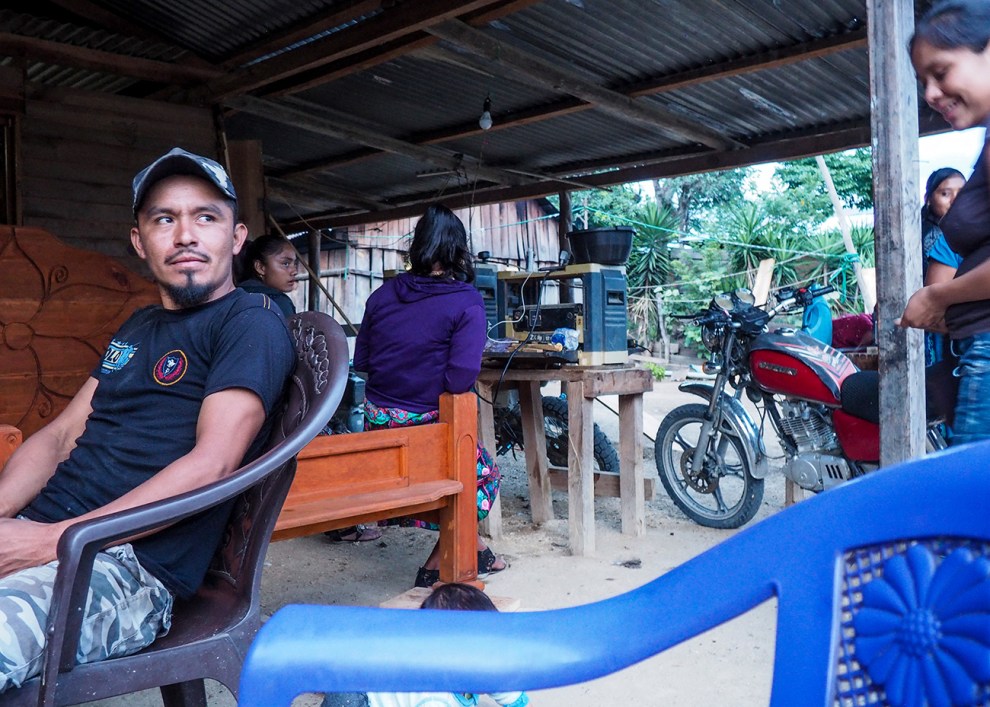
López sitting in front of the bed frame he was building.
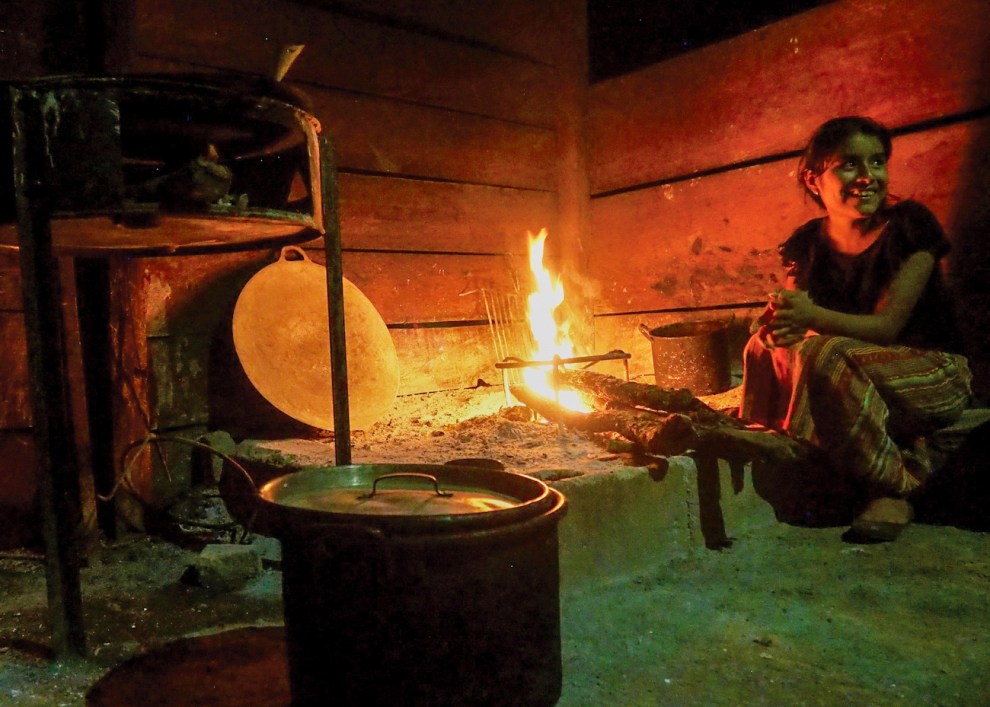
Ciprián’s niece sits in her kitchen.
Ciprián and I walked across the footbridge to the other side of the river, where a friend of Ciprián’s met us in a pickup truck. We drove up the mountain to Chivaquito on a new gravel road paid for by the settlement agreement. As we arrived late in the afternoon, López was playing soccer with a group of local men—mostly in blue jeans—on a dirt pitch that had been cleared by the road-building machines. The field clung to the side of the arid mountain, and after a 4-1 win, López hiked back up to his home in good spirits. We sat under a metal roof with about 10 of his relatives, in front of López’s latest project—a solid wood bed frame accented by a flower he’d carved into the headboard—as he described his three brothers’ journeys to Tennessee.
His brothers’ children ranged in age from six months to 11 years. They knew the perils of traveling to the border—the days without food in sweltering tractor trailers driving up through Mexico. “Kids almost die,” he said. “It’s dangerous, but the job situation here is fucked.” Every year, from November to February, many locals (including López’s brothers before they departed for the United States) left Chivaquito to make as little as $100 a month on plantations where they lack beds or cooking stoves. In the village, there was only occasional manual labor that paid nowhere near enough to support a family. Some women in town supplemented their families’ income by shelling pumpkin seeds by hand. Every Tuesday and Saturday, sacks of the seeds got dropped off at the new bridge, López’s sister said. The women got paid two quetzales—25 cents—a pound. Each pound took about an hour to shell.
Luckily, everyone from Chivaquito who had made the northward journey was still living in the United States, but people from neighboring villages had been deported. “Many are traumatized by the shame of not having a home and land, by being indebted and not having a place for their kids to live,” said López’s mother, Herlinda. Migrants were looking to spend only a few years in the United States earning money, not their whole lives, she stressed. “The US government should think about that,” she said.
López still wanted to go north, but he sensed that it had become impossible. I asked him why, and his mother answered for him. “Because the government of the United States is very bad,” she said. Herlinda is an evangelical pastor, and she put her people’s plight in biblical terms. The United States, she analogized, was Pharaoh’s Egypt. The migrants unlucky enough to be at its mercy were the Jews. She was praying to God for a US president with a conscience.
As the sun began to set, Ciprián and I drove off to a narrow wood home with earthen floors, where his sister and brother-in-law live with four of their five children. The oldest, Juan, migrated to the United States last year after the drought left him without work. Because he was already 18, he wouldn’t benefit from the limits on detention of minors, so he had to evade Border Patrol.
The smugglers told him he’d need to walk through the Texas desert for six hours. It ended up taking four days and nights. One of the migrants in his group fainted along the way. His companions tried to keep him moving forward, but he didn’t make it. They buried him right there in the desert.
In Tennessee, Juan quickly found work in construction, and his remittances had started arriving in Chivaquito. The family could already buy more meat and sugar. The parents were thinking of sending their second-oldest boy, Deyvi, soon. Their 13-year-old daughter, María, wandered off to start a fire in the detached wood kitchen. She sat peacefully, poking at the flames that lit her face with a warm glow. When she rejoined her family outside under a harsh fluorescent bulb, I asked whether she wanted to go north as well.
“Yes,” her mom whispered to her, “I’m going to go to work.”
“Yes,” she repeated back. “I’m going to go to work.”
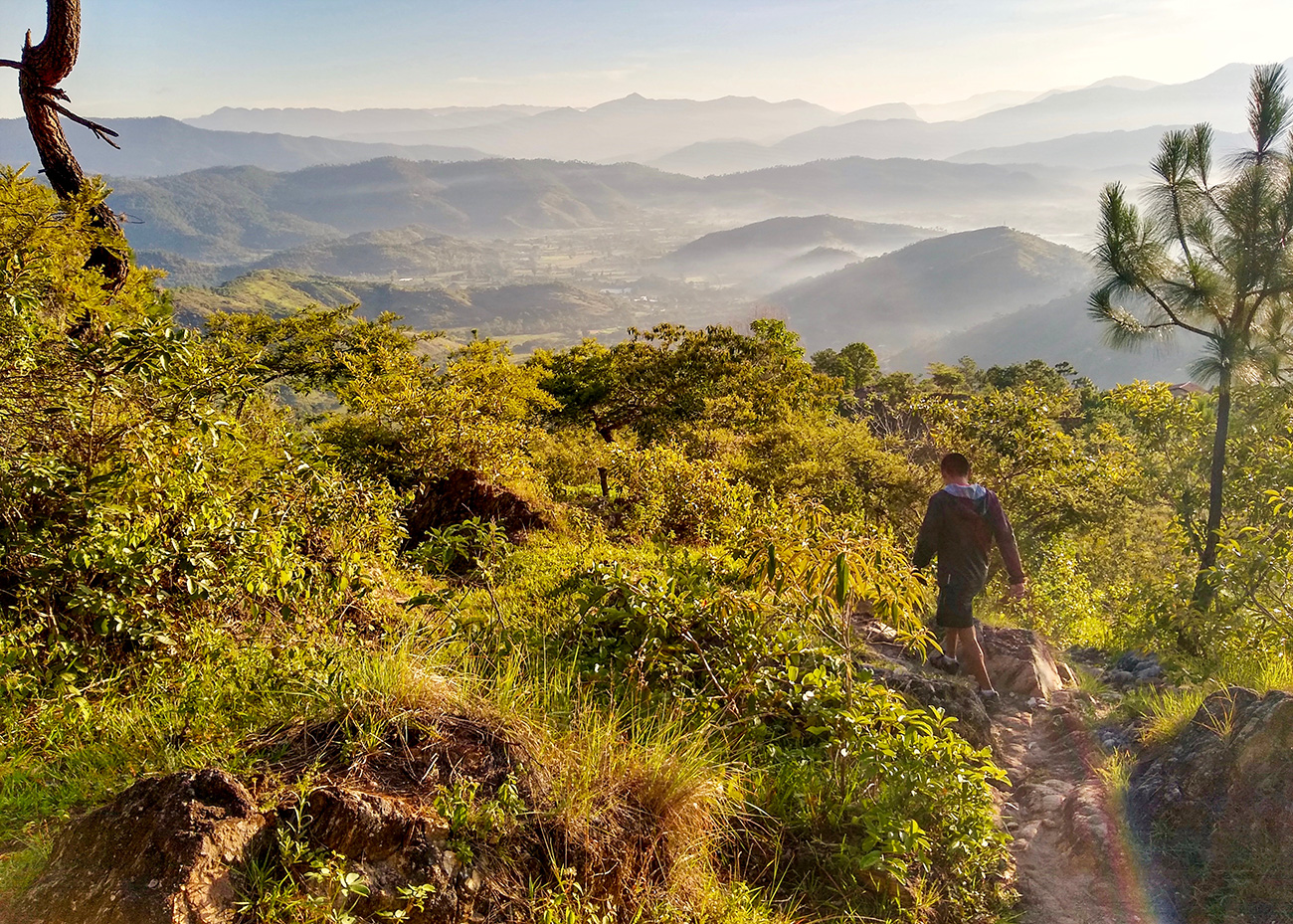
Cornelio Ciprián, a radio DJ, walks through the mountains in Cubulco, Guatemala.
Top image credits: SMG/Getty; Jair Cabrera Torres/Le Pictorium Agency/ZUMA; Noah Lanard; Drew Angerer/Getty
